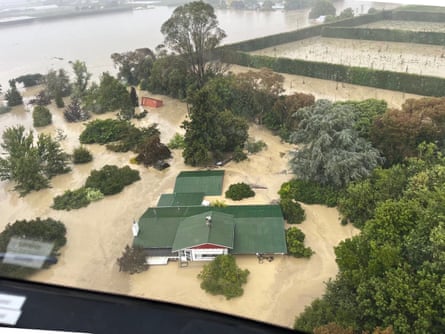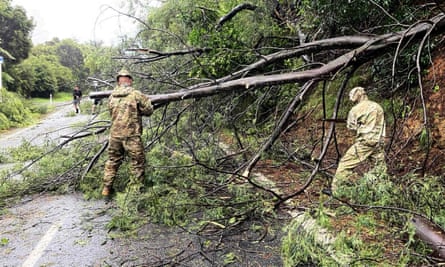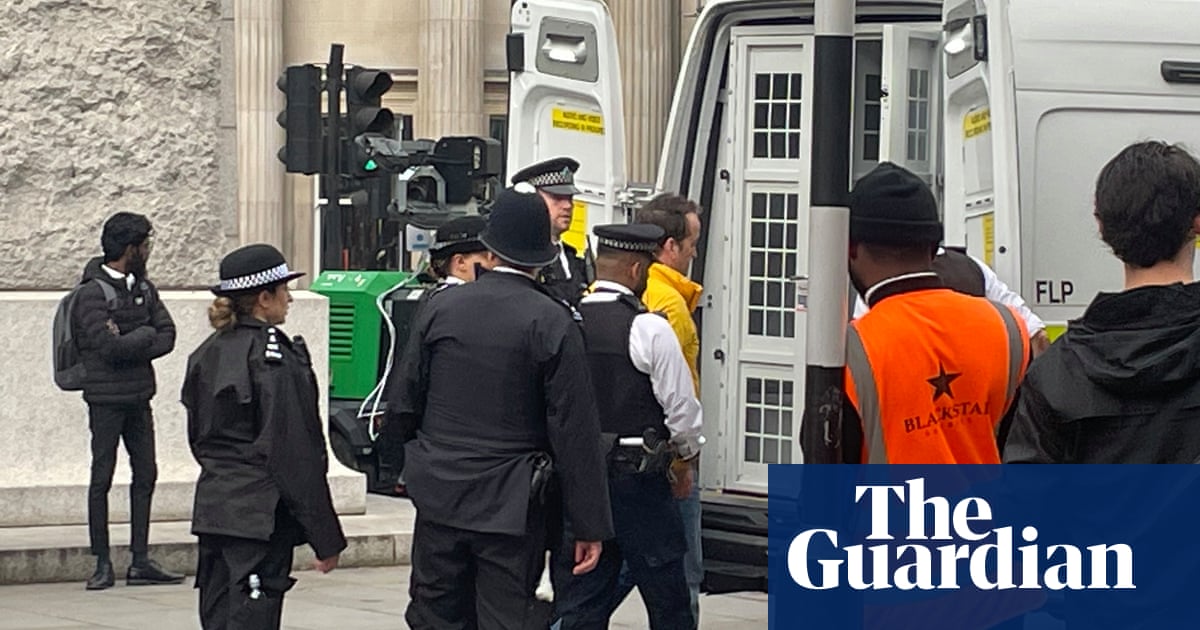New Zealand was attempting to come to grips with the extent of destruction from Cyclone Gabrielle, as the severe weather system moves away from the country, leaving behind high flood waters, widespread damage, more than 10,000 displaced and at least three dead.
As much of the country woke on Wednesday morning to clear skies, some parts of the North Island remained cut off from all access, power and communications, making assessing the damage or reaching those in need difficult.
Roads and homes have been submerged by flooding, while key state highways have been cut off by landslides and road collapse. Power was restored to about 80,000 households overnight, but an estimated 144,000 remained without power on Wednesday.
“What is of concern is that there are still areas that don’t have power, there are still areas that don’t have communications,” the emergency management minister, Kieran McAnulty, said on Wednesday morning.
Hundreds of people had to be rescued from rooftops after flooding rose to inundate their homes.
While high winds had initially made helicopter recovery impossible, on Wednesday morning McAnulty said about 300 had been rescued from their roofs in the Hawke’s Bay.
Some had been forced to swim to safety after the water rose over their homes. “In some cases, flood waters were up to the second story of homes where people were being rescued,” the defence force said in a statement.
In parts of the region, flood waters were still rising on Wednesday morning, with the local city council continuing to issue fresh evacuation orders.
At least two people have died in the Hawke’s Bay area; one woman was killed after a landslide crushed her home, and another person was found dead on the shoreline.
McAnulty said on Wednesday that it would be unsurprising if the death toll in the region rose further. “It wouldn’t surprise me,” he said. “Obviously we hope that doesn’t happen.”

In Muriwai, Auckland, a body was found on Wednesday morning in the search for a firefighter who had been missing after a landslide destroyed the house that emergency services were checking.
Concern is growing for areas of the North Island without communications or power, where authorities have little or no information on the welfare of small settlements and rural residents.
The town of Wairoa in the Hawke’s Bay region, home to about 8,600, had been a communications blackspot on Tuesday, with all access and telecommunications down.
A civil defence team in the town dispatched a message via satellite phone in the early hours of Wednesday, saying: “We are managing but we are geographically isolated and facing severe challenges. These include food and water supply, fuel and communications. We are working to ensure people’s safety.”
They said the town had only one day’s worth of food and two of drinking water.
The damage to New Zealand’s transport network is extensive, with many key arterial routes cut off by slips or collapse.
In the Coromandel, McAnulty said access was extremely limited, with the region “absolutely pelted”.
The arterial state highway had collapsed, he said, and “the road network, both state highways and local roads, has been decimated with slips”.

In Northland, the country’s northernmost region, access was also extremely limited, with landslides cutting off most of the state highways. As of Tuesday night, Waka Kotahi NZ Transport Agency classed both regions as “isolated … with all major arterial roads still closed”.
As of Wednesday morning, the government said 9,000 people had been evacuated or displaced in the Hawke’s Bay region alone. There is no updated national figure, but on Tuesday the government had said 1,500 were evacuated or displaced outside the Hawke’s Bay area. Given the number of regions that remain uncontactable across the North Island, that figure is expected to rise. The number of people injured, and homes destroyed, remained unknown.
The government continued to urge New Zealanders to evacuate if needed and avoid unnecessary travel.
“If it’s safe to stay and you don’t need to go, if you’ve got the provisions, hunker down, look after each other,” McAnulty said. “It will be OK. It will clear.”

 1 year ago
66
1 year ago
66










 English (US)
English (US)